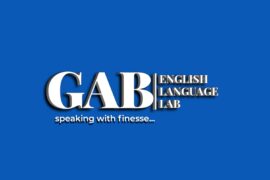A schematic report has the following format:
a. Heading or Title
eg, ‘ Report on Labour Unrest in Wema Bank’
The above title is simple. The title of a report could be complex as in: A REPORT SUBMITTED BY AN INTERNAL PANEL SET UP BY THE MANAGING DIRECTOR, AMAC COMPANIES ON MISSING FIRE EXTINGUISHERS FROM THE COMPANY.
A complex report heading will embody, inter alia:
1. Report sender
2. Report recipient
3. Report subject
4. Place of report
b. Membership: This part of the report identifies the committee in terms of its membership and the status of each member. It is the first entry in a schematic report after the title or heading.
c. Terms of Reference: This part of the report contains a statement of the problem for which the report is desired. It States the limit or the scope of the report. It could contain one item or several items depending on the purpose of the report. Below is an example:
Terms of reference
1. To ascertain the facts and fiction of the incident and the circumstances which led to the loss.
2. To determine the extent of the involvement of the suspects, etc
c. Procedure: The committee sent out letters calling for memoranda on the issue from:
the entire staff of the company, heads of departments, the company secretary and so on.
d. Interviews
All senior staff members in the company were interviewed .
A randomized sample of fifty workers was interviewed. All interviews were tape-recorded.
Inspection tour of the warehouse was carried out to determine the extent of damage/loss.
Note: Every measure taken to elicit information must be clearly and carefully described.
e. Findings: This part of the report contains an x-ray of the discoveries made during the investigation. This part, which is sometimes called the text, is the hub of every report. It is in this part of the report that the data collected during the information search are collated, interpreted and analysed. The report writer avoids infusing extraneous English for Toda into the findings by limiting his analysis to the facts in the data within the terms of reference.
f. Conclusion: This part of a report calls for the writer’s critical judgement and objectivity. The report writer avoids any vague generalizations and ignores personal opinions which cannot be supported by his findings.
g. Recommendations: In this part, the writer makes definite suggestions or proposal on the subject-matter of the report. The writer must be guided by the findings and conclusions already reached.
h. Signature: The report must bear the full name and the signature of the writer(s).
i. Date: It is crucial to indicate the date when the report was written, completed or submitted.
j. Enclosures: Sometimes it may be desirable to include certain documents such as the minutes of meetings and questionnaire.



14 Comments
thank you for your help
NIMESHUKURU AKI
Thank you so much. Am enlightened on structure of a schematic report
Most informative and helpful. Greatly appreciated.
THANK YOU SO MUCH GOD BLESS YOU
Greatly appreciated
Interested to join this useful website for good help and un dying effort they offer in helping student and others
Thank you very much for your infor
So clear Thank you so much
THANKS, AM ANSWERED
this is very helpful and thank you for your efforts ,please continue the good work.
Good example to us students, we really appreciate 🙏
Thanks for your your guidance
Thanks l am answered